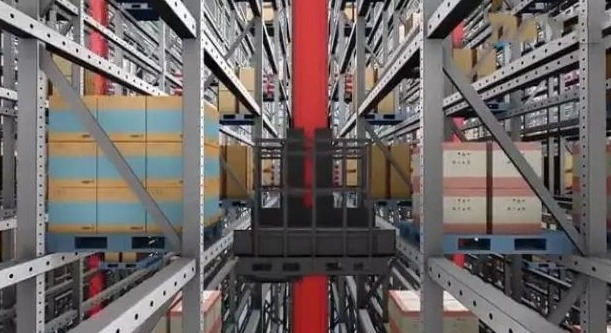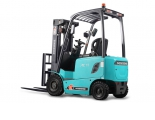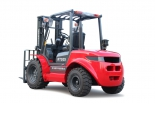-
Mobile version
Sweep with your mobile phone
- Member Center
UAVs, unmanned vehicles and unmanned warehouses compete to appear. Is unmanned logistics still far away
publish:2022-08-24 20:42:13
views
:540
publish:2022-08-24 20:42:13
 540
540

"Unmanned logistics" is coming quietly. At the world robot conference held a few days ago, jd.com revealed that it plans to apply for piloting the drone delivery service in some areas of Daxing around Beijing's South sixth ring road. Before that, jd.com, Alibaba and Suning have successively revealed their "unmanned warehouse".
The industry believes that the new dividend of technology is reshaping the value of logistics. However, while developing smart logistics, we should also make a balance between efficiency and cost, and never "unmanned" for the sake of "unmanned".
Logistics enterprises strive for "unmanned"
currently, logistics enterprises are engaged in all-round competition in "unmanned logistics", and the competition between Alibaba and jd.com is particularly fierce. At the beginning of August, jd.com announced the opening of an unmanned sorting center in Kunshan, Jiangsu Province. Its biggest feature is that the whole process from package supply to loading is unmanned. Meanwhile, Alibaba's Cainiao network also announced that China's largest robot warehouse built by Alibaba has been put into use in Huiyang, Guangdong Province.
jd.com said that drones, unmanned vehicles and unmanned warehouses are the three pillars of jd.com's smart logistics, "Since 618 this year, JD drones have been in daily operation in Suqian and Xi'an. They have completed thousands of single delivery tasks in two months, with a flight mileage of nearly 20000 kilometers. JD drones have also been put into operation in many universities in Beijing, Hangzhou and Xi'an, and intelligent robots have been put into use in different warehousing and logistics centers."
When interviewed by reporters, Liu Dacheng, vice president of the Internet Industry Research Institute of Tsinghua University, pointed out that unmanned logistics mainly includes unmanned warehouse and unmanned distribution. Although these two concepts are very eye-catching, unmanned warehouse and unmanned distribution are not new things, but they were only used in a single link in the past.
at present, Google, Amazon, DHL, SF express and Wal mart are all launching drone delivery services.
Amazon acquired Kiva system company with us $775 million in 2012. Its Kiva storage robot can lift 3000 pounds of goods and move quickly between shelves.
Liu Dacheng said that "unmanned logistics" has become closer and closer to our real life. The reason why Alibaba, jd.com and other enterprises frequently act in "unmanned logistics" is that they are grabbing the attention of capital. Unmanned logistics is the trend of future development. It integrates almost all the current hot technologies. It is not only the best tool to attract capital accumulation and hasten the rise of market value, but also one of the best means of competition in the logistics industry.
Efficiency and cost depend on application scenarios
the biggest advantage of unmanned logistics is to improve efficiency and reduce costs.
according to JD, the storage efficiency of JD's unmanned warehouse is more than five times that of traditional beam shelves. The sorting capacity of Jingdong Kunshan unmanned sorting center can reach 9000 pieces / hour, and the efficiency of the package supply link has been improved by four times. Under the premise of the same site scale and sorting cargo volume, 180 people can be saved in each site. UAV can shorten the time of traditional manual distribution by several times or even tens of times, and the logistics cost will also be reduced.
Cainiao network also said that in the past, in traditional warehouses, after consumers placed orders, the pickers needed to run to the shelves to pick out the goods. Since there are often several or dozens of goods in an order, the picker needs to run in the warehouse for many times, and usually can only pick more than 100 goods per hour. Now, after the picker is matched with the robot, the picking volume per hour is more than three times higher than before.
People in the industry said that the logistics industry is facing a new turning point from the Internet to the Internet of things, and industry 4.0 has naturally integrated into the field of logistics warehousing automation. In recent years, the emergence of modern technologies such as logistics warehousing automation and intelligent warehouse has closely linked the automation modules that originally operated independently with information technology, thus bringing about a leap in the overall physical structure of the logistics industry.
obviously, the logistics industry is undergoing transformation and upgrading of new technologies, new business forms and new models, and the new dividends of technology are also reshaping China's logistics value chain and the new pattern of the logistics industry.
however, Liu Dacheng believes that whether "unmanned logistics" can improve efficiency and reduce costs still depends on the application scenario and specific operations. "From the perspective of logistics efficiency, unmanned logistics has more advantages than manual logistics in repetitive operations, load-bearing operations, non accurate handling operations and high-speed identification operations. But unmanned logistics is not a panacea, especially in handling complex operations and flexible and variable operations. Machines can not replace manual logistics. Therefore, enterprises can not be unmanned."
in his view, "if human and machine work together, that is, people do what people are good at, and machines do what machines are good at, it will be possible to greatly improve efficiency and reduce costs."
It's too early to fully popularize
although unmanned logistics has entered our vision, experts believe that it is too early to fully popularize it.
Liu Dacheng said that in the field of logistics, many "unit nodes" have just started to be unmanned, which can not be compared with labor in terms of operation efficiency, operation quality and input cost; At the same time, human-computer integration will highlight people's innovation, flexibility and adaptability. Therefore, it will take some time to completely "unmanned".
"of course, a breakthrough at a certain point may lead to the improvement and development of the whole system, and the popularity of unmanned logistics may also be rapidly reached at a certain critical time." Liu Dacheng said.
In the opinion of Zhao Xiaomin, CEO and logistics expert of guanshuo capital, major enterprises are still unable to commercialize UAVs and unmanned warehouses on a large scale. At this stage, the cost of unmanned logistics is far higher than the labor cost, and these are all conceptual things, which are still far from mature application and system integration.
Liu Dacheng believes that at present, the difficulties in accelerating the popularization of unmanned logistics still lie in legal, technical, cost and operation issues. "The purpose of unmanned logistics is to deliver goods to customers more effectively and accurately. However, in case of legal disputes, who should bear the responsibility? How to be accountable after being hacked? How to identify customers more effectively?"
it is worth mentioning that the government has recently issued a series of measures to encourage the development of smart logistics around the "cost reduction and efficiency increase" of the logistics industry, which has greatly promoted the development of the logistics industry.
Liu Dacheng believes that favorable policies have brought capital. The competitive advantage of the logistics industry lies in the scale, networking and standardization, and these "three modernizations" need the promotion of capital. Traditional logistics has been ignored by capital for a long time because of its large investment, low profit and slow efficiency. Since 2014, the central government has judged the hour and sized up the situation, given continuous support to the logistics industry as a driving industry connecting production and consumption, and let capital increasingly participate in the product innovation and system integration of the logistics industry. The unmanned logistics is a big dividend generated in this process.
However, Liu Dacheng also pointed out that the difficulty of unmanned logistics development in the future lies in how to turn the contradiction of "people + unmanned" into a fusion.
capital
However
jd.com






